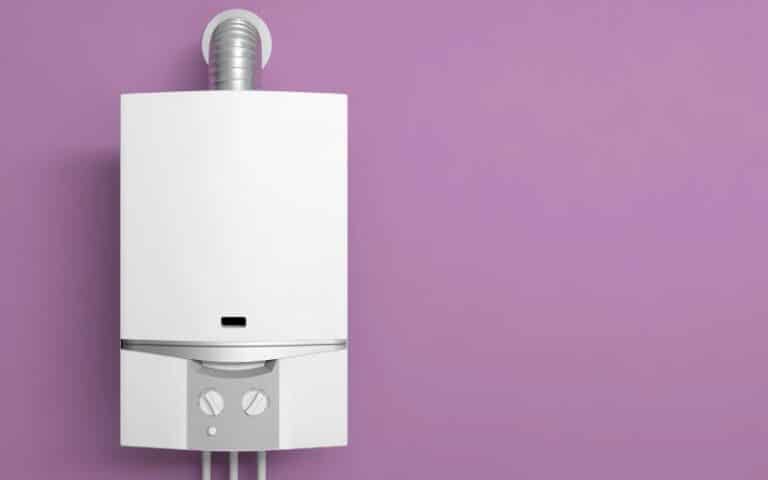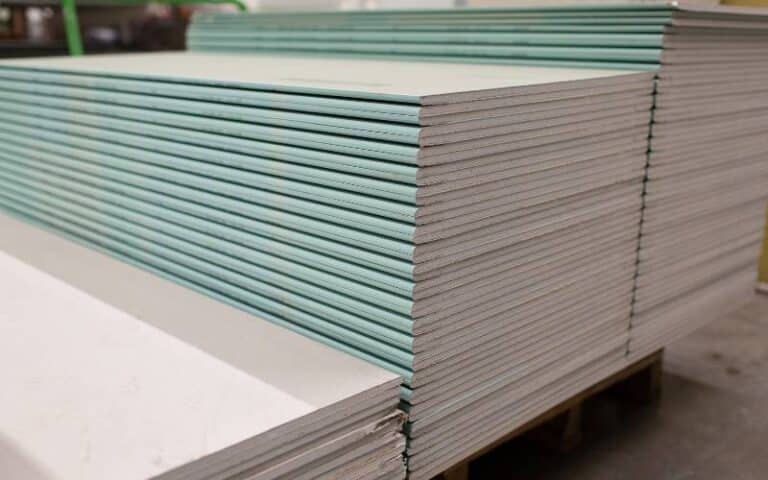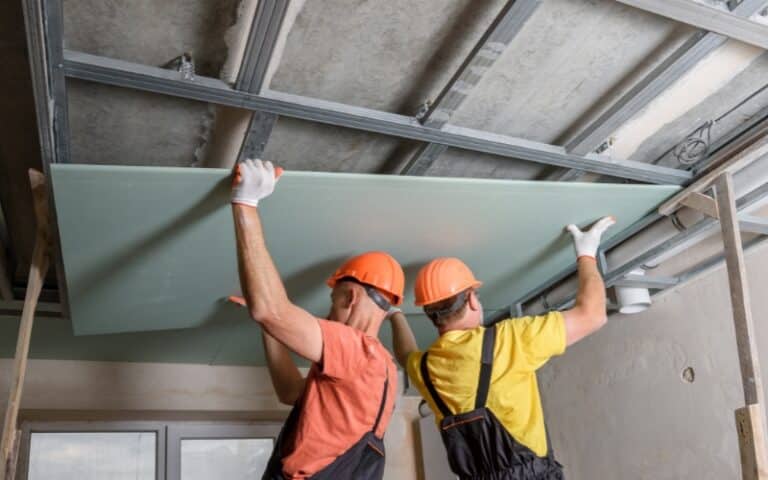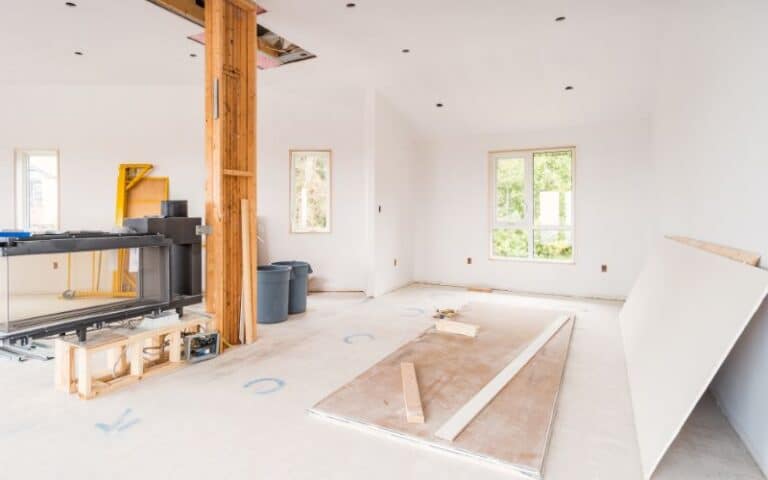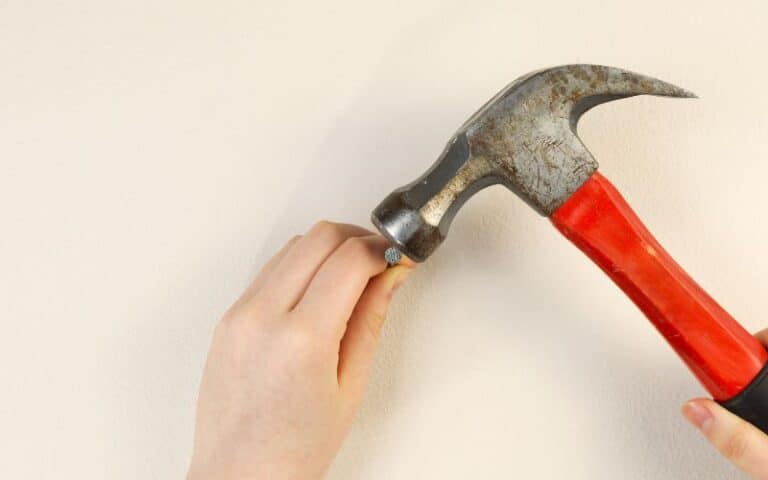Drywall, also known as Sheetrock, is one of the most popular materials to overlay buildings’ internal and external walls under construction.
The United States is the highest consumer of drywall, and with the increase in the price of drywall, finding cheap drywall has become significant.
Lowes and Homedepot both sell drywall cheaply at wholesale and retail rates. Although there has been an increase in the price of drywall over the years, you can still get drywall for as low as $11-$15 per sheet from Lowes and Home Depot.
In this article, I will list the different types of drywall you can buy, their uses, and retailers that sell drywall at very affordable rates.
Ready for a Drywall Quiz?
What is the Cheapest Place To Purchase Drywall?
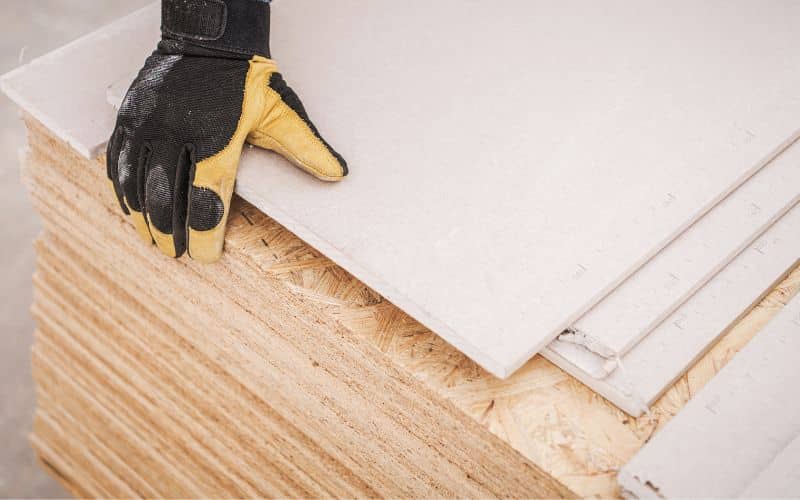
Home Depot and Lowes are the two drywall retailers that still sell drywall for sub $15 per panel.
Drywall has increased in price over the years due to many economic and environmental factors. Gradual inflation is one of the reasons for the price hike.
Consumers should also note that not all drywalls are the same, and three main factors influence the price of drywall.
Factors that affect the price of drywall
#1. Type of drywall
There are about six different types of drywall in use today; they are
- Standard drywall
- Blue drywall
- Green drywall
- Purple drywall
- Type X drywall
The above are drywall, but they have different properties. For example, green drywall has good moisture resistance, while purple drywall has moisture and mold resistance.
Drywall price increases from the standard (white), purple, and type X drywall.
#2. The Thickness of the drywall
The thickness of drywall sheets also influences their retail price. Thinner drywalls are cheaper to manufacture and transport, making them cheap, while thicker drywalls are expensive.
The table below shows the varying prices of drywall according to thickness.
| Drywall Thickness | Price (per sheet) |
|---|---|
| ¼ | $12 |
| ⅜ | $15 |
| ½ | $20 |
As you can see, the thicker drywall panels have higher prices than their thinner counterpart.
Take care when purchasing drywalls so you don’t buy drywalls that are too thick or too light for the particular job you want to do.
You can use ½ inch boards for your bedroom and bathroom walls for soundproofing, while ¼ inch is good enough for light walls and blending jobs.
#3. Size of drywall
The second best thing that affects the price of drywall sheets is the length of the panel.
There are four types of drywall sizes, including
- Four by 8 feet drywall
- Four by 12 feet drywall
- Four by 16 feet drywall
- Two by 2 feet drywall
Large drywall panels are more expensive but cost less to install than smaller drywalls.
If you are purchasing large drywalls (4 by 16) for ceilings and walls, you should be ready to pay $5-$10 extra per panel.
On the bright side, contractors charge less for large drywall installations.
What is Going on with the Cost of Drywall?
The cost of drywall has risen by almost 200% from the COVID pandemic due to the economic recession and producer price hikes.
More than 50 percent of family homes built in the US use drywall, but the fluctuating prices have led consumers to search for cheaper alternatives.
There has been a lot of speculation about the cause of the drywall hike; some parties blame the current economic recession, while others blame the current government policies.
All these contribute to the current drywall price hike, but the main culprits are;
- Producer price hikes
- Hike in transportation costs
- Manufacturing problems
#1. Producer Hike
Big drywall manufacturers like USG recently announced that they would raise the price of drywall by up to 30 percent.
The price hike is the cause of the increase in drywall costs, and some retailers are taking advantage of the price fluctuation to overcharge their customers.
Manufacturers claim the recent fall in demand for drywall and that they last made a profit in years, thus justifying the price hike.
Sadly we cannot confirm or refute these claims, so consumers must take them at face value while searching for cheaper drywall alternatives.
#2. Hike in Transportation Cost
The end of the pandemic brought about soaring gas prices, with some states buying at $6 per gallon, with others buying even higher.
And just like every economy, high gas prices lead to high transportation costs and inflation. The fuel price hike also contributed to the increased price of drywall.
#3. Manufacturing Issues
Governments worldwide are cracking down on industries that contribute to environmental pollution, indirectly affecting the price of drywall.
Drywall contains gypsum that is mined or synthetically made in factories. Coal-fired plants supply cheap power to make synthetic gypsum, but they are shutting down.
These manufacturing problems reduce manufacturing output and increase manufacturing costs, thereby raising the price of drywall.
What is the Average Price of One Drywall Sheet?
The average price of one drywall Sheet is $13 for standard drywall and $20 for type X drywall. drywall prices differ due to the thickness, size, and material used.
There are about five different types of drywall in use today. They are;
- Standard drywall
- Blue drywall
- Green drywall
- Purple drywall
- Type X drywall
#1. Standard Drywall
Standard drywall is the most commonly sold type of drywall. It is white or gray, retailing for $11-$15 per panel.
Standard or white drywall is the cheapest drywall you can buy and is light and easy to install.
Homeowners use standard drywall on the walls of their living room and hallway. It would be helpful to choose the standard drywall if you are trying to reduce your building cost.
#2. Type X Drywall
Type X drywall, aka (fire-resistant drywall) is a type of drywall that has outstanding fire-resistance properties. Type X drywall is expensive, as a single panel costs about $21.
Standard drywall has some fire resistance because it contains non-combustible gypsum, but type X drywall is more resistant due to the presence of fiberglass.
Fiberglass paired with gypsum gives the drywall immense strength and strong fire resistance for up to an hour before it burns.
Many American states require homeowners to install type X drywall in fire-prone structures like garages and tool sheds.
#3. Green drywall
Green drywall is just like standard drywall but has a wax coating that increases water resistance. A panel of green drywall can run you about $15, depending on the manufacturer.
Green drywall suits kitchen and bathroom ceiling installation because of its water resistance.
You should note that although green drywall is water resistant, it isn’t waterproof, so ensure you don’t install it in places with too much water exposure.
#4. Purple drywall
Purple drywall is the king of drywall because it combines many features from other drywalls. It has water resistance, mold resistance, and even soundproofing properties.
A panel of purple drywall will set you back $20 if you purchase from the Lowes website.
Purple drywall is best for highly humid structures like basements, bathrooms, and toilets.
Is It Safe to Use Bleach on Drywall?
When considering bleach safety for drywall, caution is advised. While bleach can effectively remove stains and mold, its use on drywall may result in discoloration or damage. It’s best to consult professionals or explore alternative cleaning solutions to ensure the integrity of your drywall remains intact.
What Is the Best Way to Drywall Under Stairs?
When it comes to drywalling under stairs, it’s important to choose the best approach. One effective method is to cut the drywall into small sections, measuring and fitting them individually to ensure a precise fit. Adding a framework for support can also help maintain the integrity of the finished wall. Proper preparation and attention to detail are key for achieving a seamless and professional-looking result when drywalling under stairs.
Is Drywall Cheaper than Plywood?
Yes, drywall is cheaper than Plywood, both in price and installation cost.
Plywood is one of the many finishes homeowners can choose for their houses. It is light, very durable, and has a way better appearance than drywall.
Plywood also doesn’t require finishing paint, tapes, and drywall cement to produce a clean and attractive finish.
Like Plywood, there are many other alternatives to drywall for your home finishing.
| Drywall Alternatives | Pros | Cons |
|---|---|---|
| Plywood | Durable, light, and no finish needed | Expensive and prone to termite infestation |
| Cement board | Very durable and inexpensive | Heavy and not easy to install |
| Concrete backing | Good heat sink and is easy to paint | Scratches easily |
| Customized wallpaper | Very durable and beautiful | Expensive, and walls sometimes require expensive screeding. |
Drywall alternatives offer different advantages that drywall doesn’t have; finishes like customized wallpaper, cement board, and Plywood each have perks.
If you are searching for something new and unique, you can choose any alternative to spice up your home. I highly recommend you get a wallpaper finish.
What is the Size of One drywall Sheet?
Drywall sheets come in three standard sizes: 4X8 feet, 4X12 feet, and 4X16 feet drywall.
Drywall differs by size, thickness, and type. These variations cause the drywall to be suitable for one task and unsuitable for another.
The 4X8 Feet drywall is the most commonly used; it is light and easy to install.
If you are installing drywall without assistance, the 4X8 feet drywall is the best because other drywall sizes are too big to install alone.
The 4X12 Feet and 4X16 Feet drywall are the largest drywalls used today; their size makes them suitable for drywalling ceilings and large walls.

